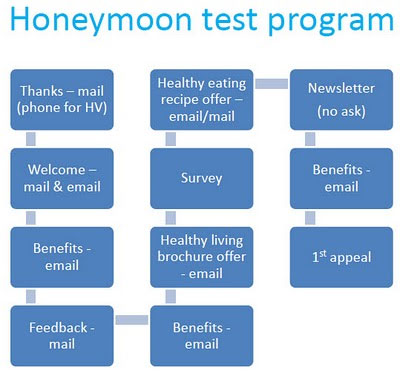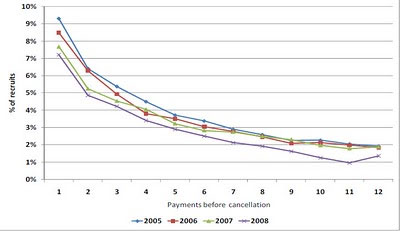I'm sure you remember the excitement of that new relationship.
You can't get enough of each other, in constant contact, living in each other’s pockets, wondering what the next encounter will bring, waiting by the phone in anticipation of that call..? Right?
Don't panic or switch to another page on me here, I'm not about to start dishing out relationship advice. The 'honeymoon period' as we flippantly refer to when we're madly in love with each other translates to new donor relationships. Well, it should anyway.
Let me explain.
In a post late last year I talked about the eight ways to get more by getting it monthly. Here I touched on the post-sign-up feeling that donors get, when the excitement of the sale has worn off. Perhaps similar to some relationships when we get to know each other a little better.
The key is addressing this, and addressing it quickly.
In fact, at the point of sign-up. That means starting with a communication (whether that's on the street, after an online donation, or a welcome pack in the post) that kills off any feeling of uncertainty and trepidation about the decision just made.
The next 30 days (the honeymoon period) need to be filled with communications like this. Two to three times a week, constant reinforcement.
Below is an example of a test programme a client of ours is undertaking, in this case a heart research organisation recruiting mostly mail donors.

So does this work? It seems pretty intense and likely pretty expensive?
The answer is yes it does and yes it is worth spending the money.
In fact one of the biggest mistakes we can do in this situation is be apathetic about this type of thing. Particularly if you are recruiting decent volumes of monthly donors, it is worth taking the time and investing the dollars to arrest attrition, as very small differences can mean a big payoff in long term value.
Take this example below. This client was investing a lot in recruiting monthly donors on the street (face to face recruitment). You'll see from the graph below that the first three months after sign-up were the biggest spikes in cancellations. Over the past three years they have implemented a series of new contacts, including better sign-up materials, video messages to new donors and a regular stream of e-communications.
And it has worked.

Whilst the impact may seem small, what this equates to is a reduction in attrition in the first three months from 21 per cent of donors acquired to 16 per cent. If you were recruiting 10,000 donors a year and managed to keep an extra 5 per cent (500) at an average of say $200 a year that's $100,000 in income, just in their first year of giving.
Not difficult to see that small changes can make a big difference.
So don't be apathetic toward new donor relationships. Make sure they feel the love of the honeymoon period. You'll both feel better for it.








